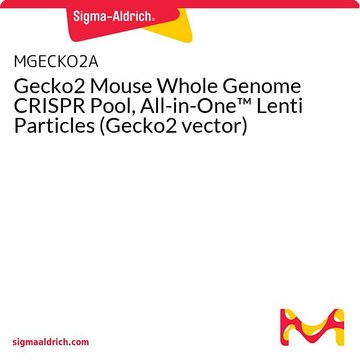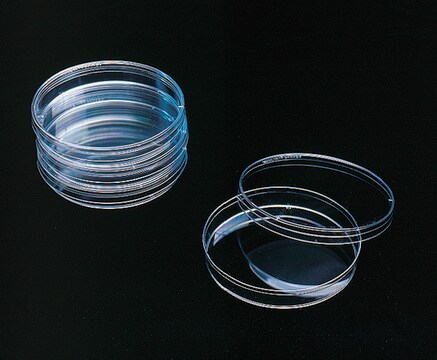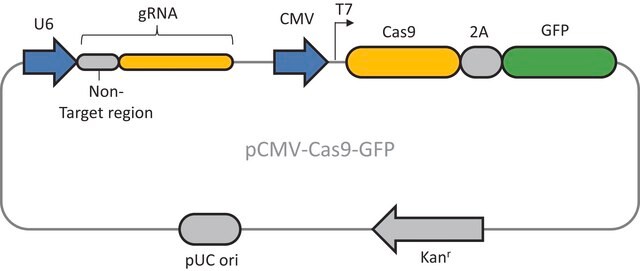추천 제품
포장
pkg of 8x25 μL (vials)
Quality Level
농도
5x108 VP/ml (via p24 assay)
응용 분야
CRISPR
배송 상태
dry ice
저장 온도
−70°C
일반 설명
Each species-specific library is delivered as two half-libraries (A and B). It is recommended to screen both A and B libraries together, which will include 6 sgRNAs per gene (3 sgRNAs in each library). Both libraries contain 1000 non-targeting control sgRNAs. The A library also targets miRNAs (4 sgRNAs per miRNA).
애플리케이션
특징 및 장점
- Use CRISPR nucleases to knockout protein-coding genes to assess their function
- Efficiently screen the whole human genome (16,000+ genes) at the bench-top without robotics or specialized equipment
- Numerous built-in enrichment and depletion controls allow researchers to confidently gauge the success of their pooled screening experiments • Lentiviral CRISPRs can infect a broad variety of mammalian cells by transducing a single guide RNA (sgRNA) to a Cas9-expressing mouse cell line to facilitate gene knockout for screening applications.
- Use the dual vector system for the mouse GeCKO version 2 libraries for mouse cell lines that have Cas9 already integrated into the genome.
- Use puromycin gRNA selection after transduction.
제조 메모
기타 정보
Storage Class Code
12 - Non Combustible Liquids
WGK
WGK 3
Flash Point (°F)
Not applicable
Flash Point (°C)
Not applicable
시험 성적서(COA)
제품의 로트/배치 번호를 입력하여 시험 성적서(COA)을 검색하십시오. 로트 및 배치 번호는 제품 라벨에 있는 ‘로트’ 또는 ‘배치’라는 용어 뒤에서 찾을 수 있습니다.
문서
Our lentiviral vector systems are developed with enhanced safety features. Numerous precautions are in place in the design of our lentiviruses to prevent replication. Good handling practices are a must.
Successful targeting relies on optimizing key sensitive steps in the process, including lentiviral transduction. Below are some helpful handling and titration tips from our R&D lentiviral experts.
프로토콜
You are not alone designing successful CRISPR, RNAi, and ORF experiments. Sigma-Aldrich was the first company to commercially offer lentivirus versions of targeted genome modification technologies and has the expertise and commitment to support new generations of scientists.
FACS (Fluorescence-Activated Cell Sorting) provides a method for sorting a mixed population of cells into two or more groups, one cell at a time, based on the specific light scattering and fluorescence of each cell. This method provides fast, objective, and quantitative recording of fluorescent signals from individual cells.
자사의 과학자팀은 생명 과학, 재료 과학, 화학 합성, 크로마토그래피, 분석 및 기타 많은 영역을 포함한 모든 과학 분야에 경험이 있습니다..
고객지원팀으로 연락바랍니다.








